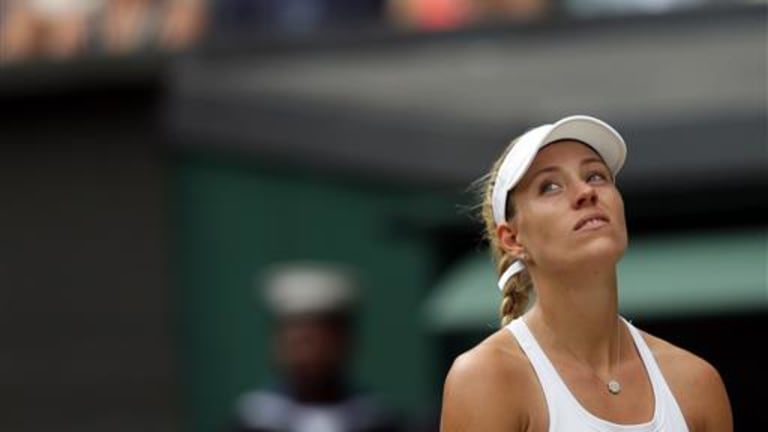Angelique Kerber watched as the ball skidded off the sideline, flew past her, and landed with a thud against the green tarp at the back of Centre Court. Then she rolled her eyes at the sky and threw her right hand up in exasperation.
This is the type of gesture that tennis players make when a ball takes a bad bounce, or hits the top of the net and falls on their side of the court, or gets blown off course by the wind. It’s a gesture of futility, a protest against fate, a hopeless objection aimed at a higher power that they know they can’t control or change. Which is why Kerber’s stare up at the sky made perfect sense. She wasn’t protesting an act of god, exactly. She was protesting the closest thing that tennis has to it at the moment: The Serena Williams serve.
In this case that serve had just wiped away—in the time it takes a ball traveling 115 M.P.H. to cross a net—the only break point that Kerber would have all day. The score was 3-3 in the second set, and the German had worked for more than an hour, and through nine of Williams’ service games, to put herself in this position.
While she had lost the first set, Kerber had played some excellent and characteristically stubborn tennis. She had moved Serena around the court with her forehand, and kept the world No. 1 at bay on the baseline. At 2-3, Kerber had held serve by winning a long, frantic, crowd-pleasing rally, in which both women had criss-crossed the court more than once. When Serena double faulted early in the next game, it looked like the match was about to swing in Kerber’s direction. That is, until Serena swung it back in her direction with that ace on the sideline.
According to her, it really was an Act of Serena; she needed a perfect serve, so she hit it.

